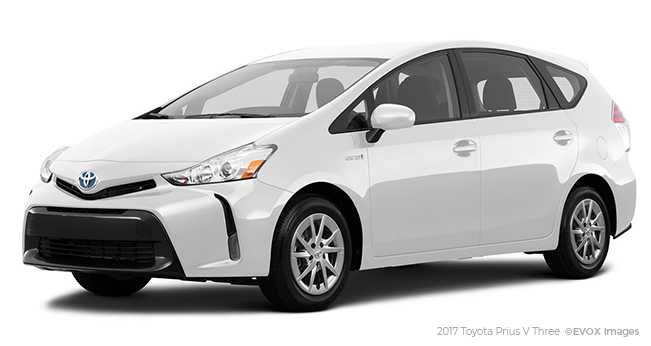Hybrids Top List of Greenest Vehicles
After several years of all-electric cars dominating the annual Greenest vehicles list, 2020 brings a resurgence of the hybrid, whether plug-in or gasoline only. With slightly higher scores, hybrids account for nine of the 12 greenest vehicles in the 23rd GreenerCars’ ratings, released today by the American Council for an Energy-Efficient Economy.
These high-scoring hybrids include the Toyota Prius Prime, three others by Toyota, four by Hyundai-Kia, and one by Honda.
The auto industry, despite slowing sales, labor disputes, trade wars, and regulatory unrest, is producing more of the most technologically advanced and fuel efficient vehicles ever offered. This is great news for consumers, who continue to have plenty of options to buy a greener, more efficient vehicle.
While electric vehicles (EVs) get a lot of buzz, the top-scoring 2020 car reflects impressive improvements to the internal combustion engine that reduce tailpipe emissions and fuel consumption. Stronger tailpipe emission standards and lower emissions from the production and distribution of gasoline have also helped nudge hybrids to the top of the list.

Screenshot via ACEEE.
The 2020 Greenest List features the most environmentally friendly cars now available. Each car is given a Green Score based on an environmental damage index (EDX), which reflects the cost to human health from air pollution associated with vehicle manufacturing, the production and distribution of fuel or electricity, and vehicle tailpipes.
Scores for many battery or EVs dropped slightly from last year. For some, this is a result of an update to the GreenerCars scoring model that calculates emissions from manufacturing different types of battery chemistries. Others, including the Hyundai Ionic Electric and Kia Soul Electric, come with substantially larger batteries and a considerable boost in driving range for 2020 that increase emissions from manufacturing and recycling and also slightly increase per-mile energy consumption.
Still, the greenest list has become increasingly competitive over time. We score vehicles on an even playing field that uses average emissions across the country, but the emissions associated with a particular vehicle can depend on many factors. One of the most significant impacts for EVs is the fuel used to generate electricity where the vehicle is charged, both today and in the future. Our analysis uses US government projections, which include slower growth in renewable energy generation than many other forecasts. For those considering whether a particular EV would fare better for their particular area, check out the GreenerCars Electric Vehicle Emissions Calculator.
This marks the fifth consecutive year that the Greenest List contains no vehicle with solely an internal combustion engine. Even a small degree of electrification can greatly improve fuel economy and power, giving automakers an important tool to maintain the power that consumers expect, while allowing electric motors to help engines operate as efficiently as possible.
GreenerCars.org also identifies practical options in each class among widely available automatic transmission gasoline-powered models. The Greener Choices list includes conventional vehicles and traditional hybrids, but excludes plug-in hybrids and pure battery EVs given the limited availability of charging stations.

Screenshot via ACEEE.
Many of these vehicles return to the Greener Choices list from prior years, indicating both their popularity with consumers and the ability of the automaker to design and sell greener vehicles. While a number of models are hybrids, most are standard gasoline-fueled vehicles that achieve better fuel economy today compared to some hybrid options of just 10 years ago.
GreenerCars.org also provides a Meanest List, as usual made up of gasoline-powered large SUVs, pickup trucks, and European luxury cars that are the least friendly to the environment. The Jeep Grand Cherokee Trackhawk takes the first (or last) position for a second year, with the rest of the list populated by regulars from prior years.
Changes to this year’s methodology include updates to estimates of vehicle lifetime miles travelled for electric vehicles, emissions associated with the production of gasoline and diesel fuels, and refinements to estimates of emissions from the manufacturing and recycling of battery electric vehicles.
Green Scores of the 1,100-plus model year 2020 vehicles are available for free in the GreenerCars.org interactive database, along with each configuration’s fuel economy, health-related pollution impacts, and greenhouse gas emissions.
Source: https://www.automotive-fleet.com
FLEET MANAGEMENT AUDIT
Fleet management is the use of a set of vehicles in order to provide services to a third-party, or to perform a task for our organization, in the most efficient and productive manner with a determined level of service and cost.
Fleet management activities are shown in the following graph 1:

Graph 1: fleet management activities
The proposal audit analyses and assesses all fleet management activities shown in the graph 1, and its main goals are:
- Know the overall status of the fleet management activities
- Provide the analysis, the assessment, the advice, the suggestions and the actions to take in order to cut costs and increase the efficiency and efficacy of the fleet management activities
With the information obtained, we’ll elaborate a report that holds the overall status of the fleet management as well as the suggestions, recommendations and the measures to take in order to cut costs and optimize the fleet management activities.
CLICK ON THE FOLLOWING LINK TO DOWNLOAD THE PROPOSED FLEET MANAGEMENT AUDIT:



